
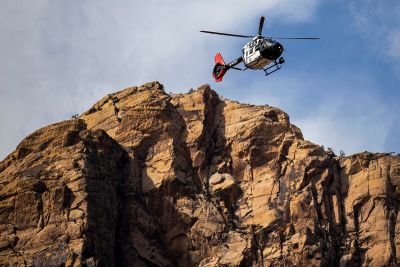
More than 3 million people visit Red Rock Canyon National Conservation Area annually, but a few dozen visitors each year find themselves needing to call for help.
Between 2021 and 2023, 181 people received services from the Metropolitan Police Department’s Search and Rescue Unit within Red Rock Canyon’s 195,819 acres, according to data from the department.
The number of rescue missions and people rescued dropped between those years, with 2021 seeing 44 rescue missions involving 68 people, 2022 having 45 missions and 74 people needing assistance, and 2023 dropping to 39 people receiving search and rescue services in 34 total missions, according to the department.
But, over 30 percent of all the rescues happen within three areas in Red Rock Canyon: Juniper Canyon, Kraft Mountain and Black Velvet Canyon, which are known for their world famous, advanced rock climbing routes.
Last year, Red Bull named Red Rock Canyon the second top rock climbing destination in the world. Professional rock climbers from across the world, including Alex Honnold, the first person to ever free solo El Capitan in Yosemite National Park, have traversed the area’s many peaks and canyons.
With that prestige, the conservation area attracts both skilled climbers and those just starting out who don’t know what they’re doing, according to John Asselin, spokesman for the Bureau of Land Management.
“People wanting to start out rock climbing and then go above their abilities don’t have the right skill set and don’t have the right equipment,” Asselin said. “So those climbing areas, of course, you’re going to get more search and rescues because it’s more risky than just walking down a boardwalk.”
Lt. David Gordon, who oversees Metro’s Search and Rescue Unit, said one of the top reasons why people often require Metro’s rescue services is that they underestimate the terrain, and overestimate their abilities.
“(People) think it’s easier to climb up than climb down, they might have improper equipment or insufficient equipment such as food, water, clothing, and as a result, falls (and) injuries occur,” he said.
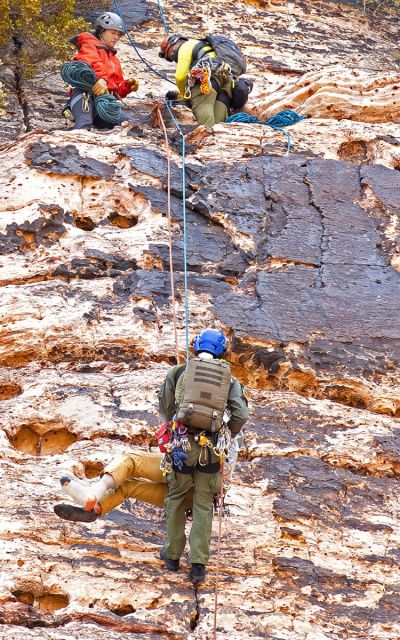 Metropolitan Police Department Search and Rescue Unit members lower a climber to an extraction point after he fell and seriously injured a leg at Pine Creek Canyon in Red Rock Canyon National Conservation Area on Feb. 15, 2021. (Benjamin Hager/Las Vegas Review-Journal @benjaminhphoto)
Metropolitan Police Department Search and Rescue Unit members lower a climber to an extraction point after he fell and seriously injured a leg at Pine Creek Canyon in Red Rock Canyon National Conservation Area on Feb. 15, 2021. (Benjamin Hager/Las Vegas Review-Journal @benjaminhphoto)Brittle sandstone weakened by rain can also present safety issues throughout the region — especially to new climbers who don’t know how weak the rock can get, Asselin said.
“If you go out climbing on rocks after it rains, (the rocks are) brittle, and they’ll break off,” he said. “That’s usually when we see more climbing accidents.”
And while many people think that Red Rock Canyon gets more rescue calls in the summer, Gordon said the spring and fall actually are the busiest times in the park.
“Those are the peak rescue times for us, because the weather’s ideal with 60- to 80-degree (temperatures),” he said.
Asselin said the BLM would, hypothetically, only close off an area with a higher frequency of rescues as an “absolutely last resort.”
“We have world-class level climbers who come here, so you don’t want to shut off access to routes that they can handle,” he said. “The number one step (before closing) is education.”
Gordon said he believes outreach and education efforts with the public, like handing out flyers with safety tips, have helped the number of rescues decline over the years, but he noted that more data is needed to fully understand the impact of these efforts by both Metro and the BLM.
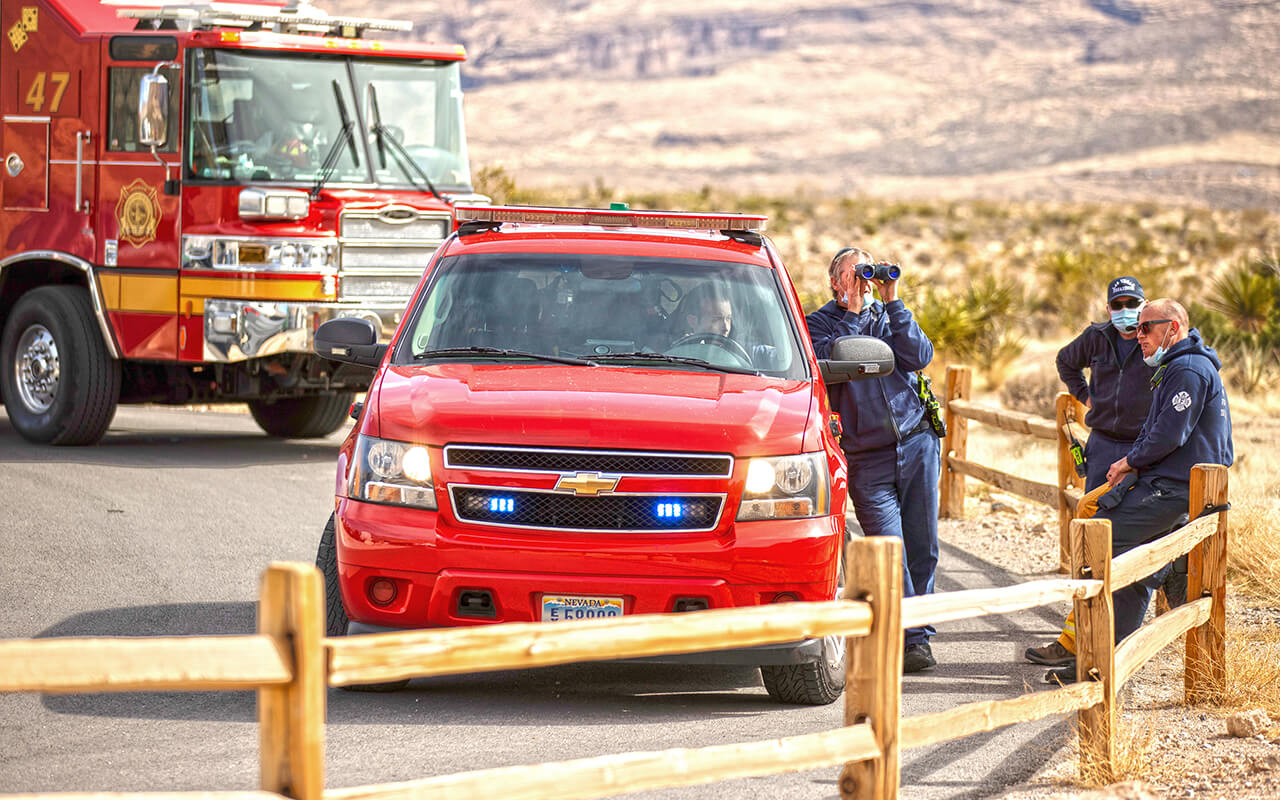 Las Vegas Fire and Rescue responds to the scene where a climber fell in Pine Creek Canyon in Red Rock Canyon National Conservation Area in 2021. The number of rescue missions and people involved dropped from 44 and 68, respectively, in 2021 to 34 and 39, respectively, in 2023. (Benjamin Hager/Las Vegas Review-Journal @benjaminhphoto)
Las Vegas Fire and Rescue responds to the scene where a climber fell in Pine Creek Canyon in Red Rock Canyon National Conservation Area in 2021. The number of rescue missions and people involved dropped from 44 and 68, respectively, in 2021 to 34 and 39, respectively, in 2023. (Benjamin Hager/Las Vegas Review-Journal @benjaminhphoto) 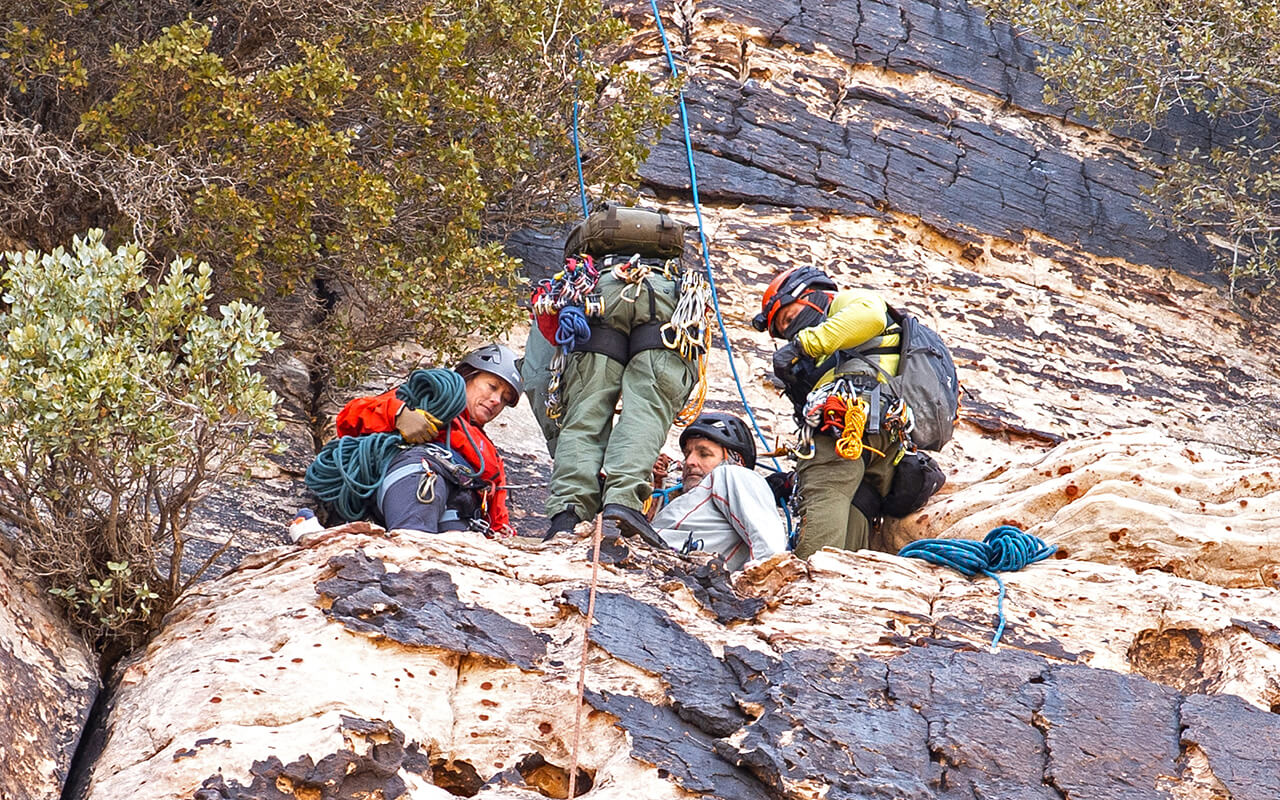 A climber who injured a leg in Pine Creek Canyon in Red Rock Canyon National Conservation team is brought down by Metropolitan Police Department Search and Rescue Unit members in 2021. Many rescues in Red Rock climbing incidents are the result of inexperience or taking on challenges too great for one's skill set. (Benjamin Hager/Las Vegas Review-Journal @benjaminhphoto)
A climber who injured a leg in Pine Creek Canyon in Red Rock Canyon National Conservation team is brought down by Metropolitan Police Department Search and Rescue Unit members in 2021. Many rescues in Red Rock climbing incidents are the result of inexperience or taking on challenges too great for one's skill set. (Benjamin Hager/Las Vegas Review-Journal @benjaminhphoto) Both officials recommended that anyone venturing into Red Rock Canyon should notify someone of where they’re going and when they plan to return, check the weather before going outside and bring food, water, a light source (in case you get stuck somewhere after dark), proper footwear and clothing, and a backup battery for your phone, even with spotty service in the area.
“It’ll be interesting once we get a couple more years, see what the rescues are for this year, and then, into 2025, see if then we could probably better gauge on whether some of our outreach efforts are working,” Gordon said.
“(Red Rock Canyon) is a beautiful place, but it’s not an amusement park — it’s the wilderness, and you can get yourself into trouble out there with no immediate help around,” Asselin said.
Contact Taylor Lane at tlane@reviewjournal.com.
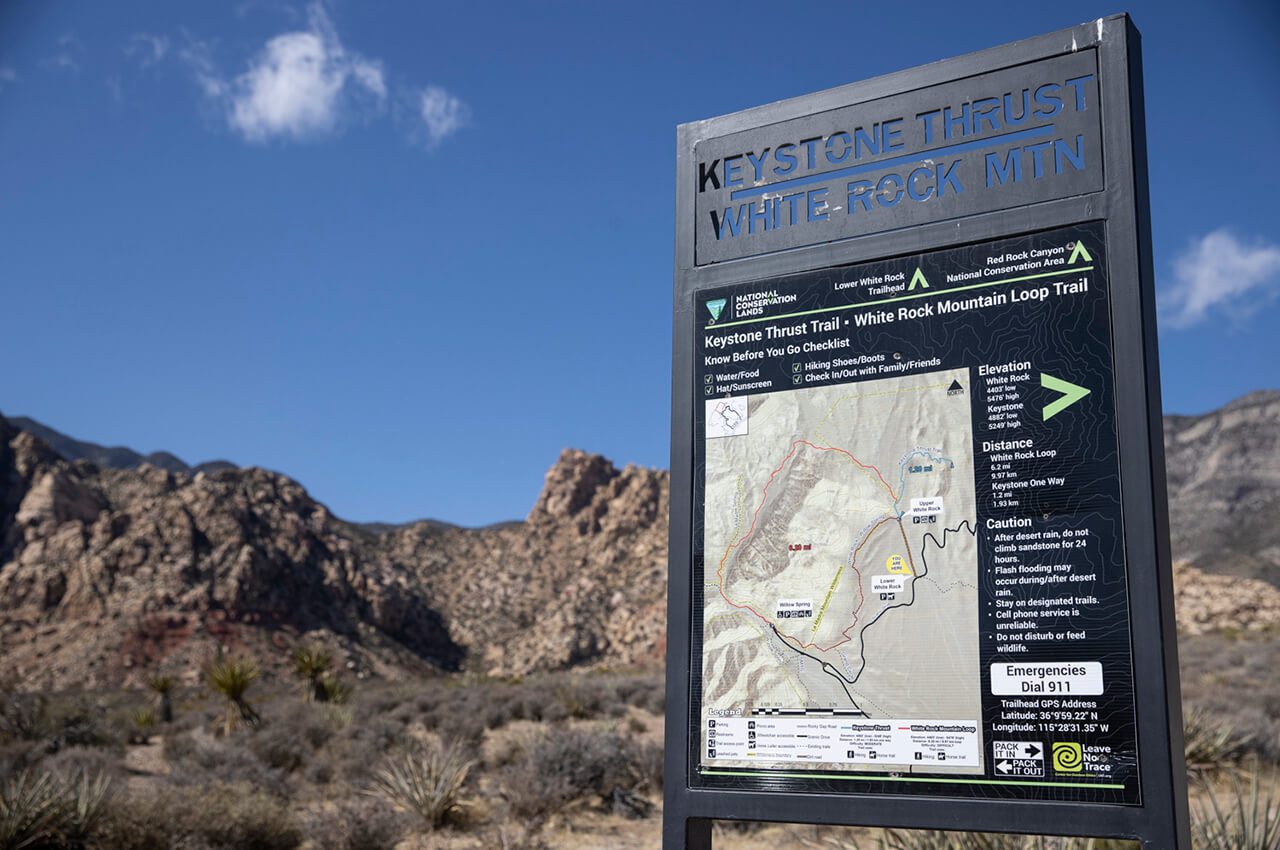 The White Rock Mountain Loop Trail parking area along the Red Rock scenic drive. A climber fell from the nearby Angel Food Wall on Feb. 27, 2021. He was safely rescued. (Erik Verduzco/Las Vegas Review-Journal @Erik_Verduzco)
The White Rock Mountain Loop Trail parking area along the Red Rock scenic drive. A climber fell from the nearby Angel Food Wall on Feb. 27, 2021. He was safely rescued. (Erik Verduzco/Las Vegas Review-Journal @Erik_Verduzco)Source: source citations, etc. Created using Mapbox Storytelling template.









